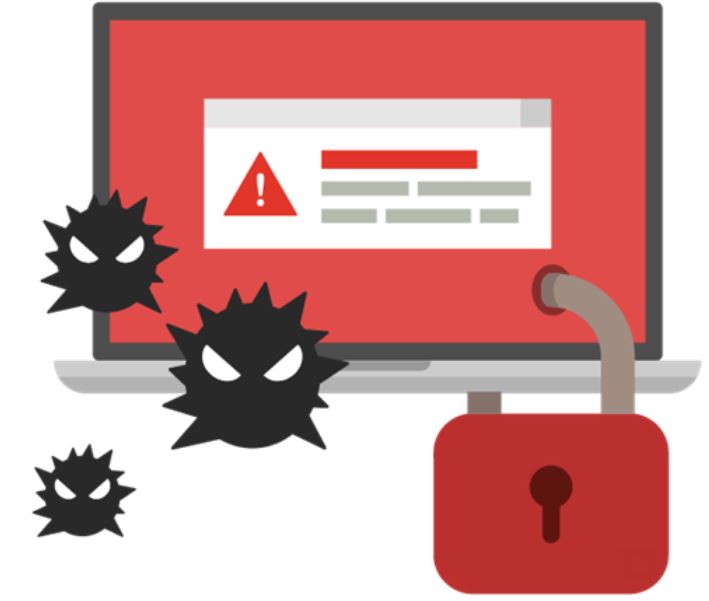|
November 2019
AutomatedBuildings.com
|
[an error occurred while processing this directive]
(Click
Message to Learn More)
|
Cyber
Attack! Cyber Attack! BAS CYBER
ATTACK!!!!!!!!!!!!!
Imagine… you’re a controls contractor. You get a call from a customer
saying their corporate business server has been hacked, and that they
got in through your BAS server. The FBI wants to talk to you...
|

Scott Cochrane,
President and CEO
Cochrane Supply & Engineering
Contributing Editor
|

Imagine… you’re a controls contractor. You get a call from a customer
saying their corporate business server has been hacked, and that they
got in through your BAS server. The FBI
wants to talk to
you...
THE BACKGROUND
- 50,000 sqft.
factory-type facility; approximately 50% office space, 50% warehouse.
- Facility is
owner-occupied.
- Fully functioning BAS
system comprised of all of the mechanical systems and some lighting
controls.
- The system consisted
of 485 devices back to a single IP gateway, which was connected to a
server with BAS software over the owner’s network.
- The server operating system and BAS software were essentially
up-to-date.
THE ATTACK! 
The building owner approached the controls contractor with some
news…
The owner’s IT department noticed one of their servers had become
encrypted and received an email stating that they’ve been attacked by
malware placed on their server. The malware went through their hard
drive to encrypt the data, affecting approximately 18GB worth of data
that was being held ransom. The owner was told that if they wanted to
get their data back, they’d have to pay 7 Bitcoin, or approximately
$55,515.
The
attack was on a business server that was on the same network as the
BAS server, which was used as the entry point into the network. The BAS
server had a remote IP address exposed on the internet, which was given
to the controls contractor for remote access. The contractor simply had
to enter their BAS software credentials and log in—they did not have to
log in to a VPN first. The hacker found the exposed IP address of the
BAS server, incorporated the malware onto the server that used the
server operating system to give it access to the rest of the network.
It’s here where the hacker found the business server it had been hoping
to find. Their network was a flat topology, so once they got into one
server, they had the keys to the city. The BAS software itself was not
hacked into, nor was there any damage done to the BAS
system.
The owner’s IT department fortunately had recent backups of the
affected server and was able to perform a rebuild within four hours of
the malware attack. This mitigated paying the ransom or any significant
damage to business operations.
THE REMEDIATION
The contractor, owner and FBI got together to evaluate what had
happened and how to mitigate it going forward. The BAS software was
rebuilt on a completely different physical server, was set up with a
VPN, and all remote access going forward would be done via remote
desktop and the VPN. The FBI recommended a new server for the BAS
system because malware, while IT experts can get most of it out of the
server, there’s no way to know it’s all out. And you don’t want to risk
leaving any of it in there—the only way to know for sure it’s removed
is to rebuild it from scratch.
All operating system software and BAS software was brought to the
current standards and the contractor used backups from their local
host—not from the building’s machines as they didn’t want to sneak
something in there inadvertently. Backups were then setup on a timely
basis in case a rebuild would have to take place again.
According to the FBI, you’d be amazed how many companies cannot enforce
diligent backups and don’t do so regularly as a result. They might do
it once a week or once a month or it’s just sporadic and they do it
when they have time. When those companies get held ransom, they’ll pay
it. The downside of this is that you’ll get a ransom for $40,000,
they’ll un-encrypt part of your data to prove they can do it, and then
demand more money again. You’re dealing with crooks. So good
luck.
[an error occurred while processing this directive]The function of the business server that got encrypted was their
day-to-day operations of all of their engineering and accounting. The
FBI was very adamant that you need to compartmentalize this data. Keep
your engineering separate from your accounting, separate from you
customer lists, separate from outside sales. Keep all these departments
on software separate from one another so people can’t see entire
businesses if they get into one system. They might get a piece of it,
but that’s all they know.
The FBI’s main interest was trying to figure out where the malware was
coming from. The contractor gave them their BAS server to dismantle it
and collect the information needed to assist their efforts. They stated
most malware now is coming from Russia or China and they are working to
track patterns of such attacks.
SUMMARY
If you have remote access to a site through a simple IP address with no
VPN or security gateway, you are setting yourself up for
disaster. Owners need to take the right steps to make sure that
remote access is either being done with a VPN or with other cyber
security measures that are monitored and maintained. Contractors should
recognize that if they are logging in remotely via just an IP address,
that BAS server is now a beacon on the internet asking hackers to come
in and create a problem for the contractor, owner and anyone who relies
on the network being hacked.
We see this scenario happening in buildings every day—it’s a BAS
industry epidemic. But…IT’S AVOIDABLE! We need to be aware,
understand
what it looks like and how to fix it.
“I thought I was playing it safe… I
thought we were protected. I was
wrong...”
-Controls Contractor
footer
[an error occurred while processing this directive]
[Click Banner To Learn More]
[Home Page] [The
Automator] [About] [Subscribe
] [Contact
Us]